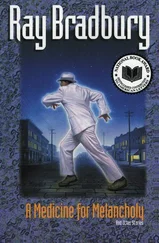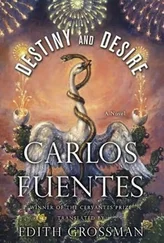We tried to be reasonable when we talked with them. What they said to us was not.
6
As the word “miracle” bounced like a pinball from mouth to mouth (from hard hat to hard hat), we assumed it was another question of adjusting the calendar so that some vital holiday could be observed. We were amused by this recurring spectacle of the Catholic proletariat wrangling with atheist capitalism. It’s not easy to identify capitalism with the Catholic religion; but in Mexico the problem is not “being a Catholic” or “being an atheist” (or the variants: an obscurantist, a progressive). The problem is whether or not to believe in the sacred.
Right away, the miracle the group of construction workers at the San Juan site was discussing, with a mixture of reverence and fear, smelled to us more like blood than like incense, which is the difference (when it comes to miracles) between representation and execution.
Blood, because one of the foremen, a man named Rudecindo Alvarado, not known for his piety, showed us an injured hand and a blind eye, and when he touched his hand to his eye, it was covered with blood, and he began his self-reproach: it was punishment from heaven, because he was a heretic and an unbeliever, that’s what the dark-skinned, pimply Rudecindo, with his thinning hair and mustache, was yammering. All the other comments we managed to overhear were in the same vein: our sins warning … give up drinking … a vision. Rudecindo tried to catch it, and look what happened to him: he got it good!
We asked one of the engineers to give us the lay version of the excitement that had interrupted the whole project, with serious conse …
He interrupted us, shaking his head: How could you even talk about anything serious with this bunch of superstitious half-wits? They saw some lights last night hovering over the works and decided it was some sort of sign.
— It didn’t occur to them to think of flying saucers?
— One of them says he saw an image; it’s a boy or a girl, or all of a sudden it’s a ghost, or a dwarf, or an I-don’t-know-what, I just don’t know, continued the engineer, as condescending and uncomfortable as usual, in front of us. — I don’t know if architects can make out what is veiled to the rest of us, but if you’d like to spend the night, maybe the Vélezes will spot what the Pérezes cannot, and the miserable little engineer laughed, his talent for silly rhymes making us curse his wit.
We laughed disdainfully and went to work: the garden. This was a work of public health and culture, we could easily concentrate on it and not worry anymore about the tangle of engineers, construction workers, metro stations, skyscrapers, and telephone cables.
Everybody else had little shelters against the rain. We, the Vélezes, just like the British Army in the Great War we’ve already mentioned, had them build us a clean little office that smelled of pine, with a bathroom added, and a grill to warm the kettle. It wasn’t for nothing that we were disciples of Santiago Ferguson and his exquisite sense of style. In any case, why work in a dump when we could have beauty and elegance?
From there we watched the rain pour down the mouths of the different projects, the open mouths, ready to swallow up the mud excreted by the soft, loose entrails of the city, which we sometimes pictured as a grotesque sausage shop, its sky a ceiling hung with ham, baloney, pork sausage, and especially tripe infested with rats, snakes, and toads: from the small window of our temporary office, we saw a slice of the old city of Mexico, as Professor Santiago said, an almost geologic slice, exposing the depths of time, ever-deeper circles reaching to an inviolate center, a foundation that dates from pre-history.
We are architects, we can read the circles of this excavation, we can name the styles, Mexican Bauhaus, Neocolonial, Art Nouveau, Neo-Aztec, the imperious style of the turn of the century (when the Fergusons arrived from Scotland) with its boulevards and neo-mansard roofs, the Neoclassical style of the eighteenth century, then Churrigueresque, Plateresque, Baroque, the Indian city, finally … Far below what we facetiously call the dominant profile, the Bauhausmann, much deeper, we imagined the city beneath the city, the original lake, the symbol of all that Mexico would once again be, surviving only in ruins, not in garbage, as Ferguson said. But we didn’t see any of this then: none of the styles just mentioned emerged from the wretched magma of this construction zone. The ripples of memory didn’t go much further than: garage, lunchstand, hardware store, filling station …
We stood staring for a long time, imagining the probable center of this excavation, and that’s where we first saw it, that afternoon, although initially we thought it was just that we’d been almost hypnotized by concentrating too hard: we saw the glow dancing in the rain.
We shut our eyes and then opened them.
We laughed together.
Saint Elmo’s fire, an electrical illusion caused by the rainstorm.
We were a bit tired, we thought we’d have a cup of Earl Grey, and everything would still have been the same if that distant light, the glow moving along the edge of the site, over the restorations, the earthquake hazards, and the devastated gardens, had not been accompanied by the most mournful sound that anyone has ever heard: a groan unmistakably bound to the two extremes of existence.
We looked at each other as brothers, recognizing each other at last. We had been born together.
And the glow became a single point before our eyes and vanished into space.
7
The next day there was even more commotion at the project. A lot of the workers wanted to bypass the civil authorities and go right to the heads of the Church. Even so, the growing number of people who wanted to see a divine miracle (how many human miracles are there?) in the phenomenon of the glow never shed their suspicion, after yesterday afternoon’s cry, that it might all be a trick of the devil. Thirty thousand years of magic and only five hundred of Christianity had taught the Mexican people at least not to be blinded by appearances. Enigma, enigma: Is the devil using the image of God to deceive us, or God the tricks of the devil to test us? Divine that, diviner.
While this was under discussion, we maintained our personal façade of serene rationality, and although we had heard yesterday afternoon’s horrible howl, we neither admitted it nor elaborated on it. We had an implicit agreement: to be born or to die was nothing out of the ordinary; and that’s what the famous cry sounded like, one of those two verbs. So the engineers and the workers turned to their superstitions, sacred or profane. We stayed firmly ensconced in our tower of secular skepticism. We were reasonable people.
But it was not God or the devil, a construction worker or an engineer, who changed our minds; it was a dog. A dog soaked to the skin, its hair so damp it looked as if it were rotting, falling in clumps from its poor skin, arrived whimpering at the door of our office, which faced the excavations. It made a tremendous racket, so we were forced to open the door.
It was carrying a broken object in its mouth, a piece of something. It dropped the object, opening its sticky drooling mouth, shook its spotted mangy hide, and turned away, showing us its wounded rump. At our feet was part of a frog, a piece of porcelain, a green frog in a sinuous style, part of a decoration that we knew and remembered only too well, that we longed for too much … We picked it up. The dog disappeared, running toward the same point where the glow had disappeared the afternoon before.
We looked at each other and in no more time than it took for the water in the teapot to come to a boil and for us to be intoxicated by the bergamot perfume, we had reached an ironic conclusion, laughing: if God or the devil wanted to get us in his clutches, he certainly knew our weakness.
Читать дальше












